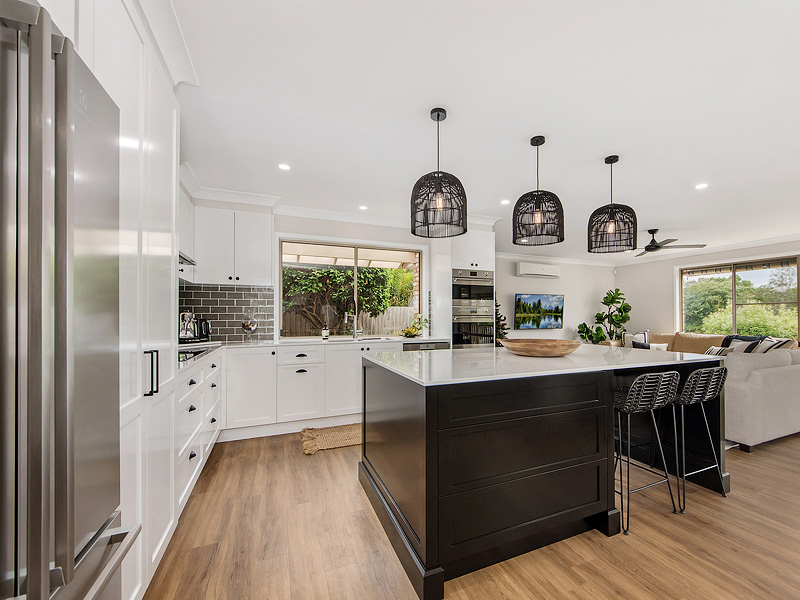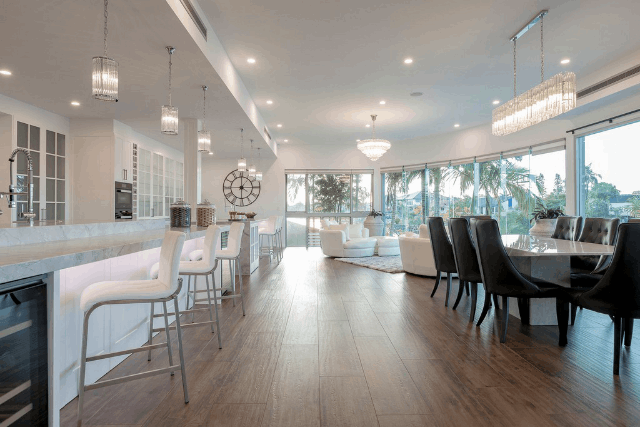Builders & Renovations FAQs
Energy efficient lighting tips for new homes
Did you know that there are simple ways to make your new home more energy efficient – even before you move in?
As lighting accounts for at least 10% of the average household electricity budget or about 7% of its energy use in Australia, it makes sense to use energy-efficient lighting in your new home. There are quite a few options available and with the cost of energy soaring, you’ll be able to reduce your monthly energy bills and make your new home environmentally sustainable.
When selecting lighting for your home, take into consideration the outcome you want to achieve, eg. a safe, comfortable, and visually appealing environment.

Light bulb options
Two of the most common energy-efficient lighting options available are:
- Light-emitting diodes - (LEDs)
- Compact fluorescent lamps (CFLs)
Each of these options has a huge variety of wattage (lumens) power, size and spectrum colour.
Lighting fact label
When comparing lighting products, it's important to read the lighting fact label.
- Brightness - measured in lumens, not wattage. The higher the number of lumens, the brighter the light.
- Estimated yearly energy cost - this is based on 3 hours per day at 11 cents per kWh.
- Life - bulb life in years based on 3 hours per day usage.
- Light appearance - Colour emitted on a scale of warm which is considered softer and more relaxing, and cool , which is a neutral light, good for concentrating on tasks in kitchens and garages.
- Energy used - power consumption measured in wattage. The lower the number the lower the power consumed.

Tips for efficient lighting options
- Utilise natural light - The size and orientation of your windows will affect the amount of sunlight entering your home. Have your house designed to maximise natural daylight in high-use areas, commonly known as Smart design homes have skylights installed, and make the most of natural light where possible. Eg north-facing windows allow both sunlight and daylight into a home, particularly in winter when the sun is lower in the sky.
- Design for the house for light - window size, the number of windows you have installed in your new home, and even installing glass doors where possible.
- Position of lights - to ensure the best possible light distribution in a room.
- Install skylights, transparent roof panels or light tubes - These all maximise sunlight entering rooms, using the energy from the sun, and saving on your energy bills. This is also an environmentally friendly method of lighting.
- Use LED lights - LEDs use about 80% less energy than halogen light bulbs and have a much longer lifespan, lasting at least 5 - 10 times longer.
- Use motion sensor lights where possible - Sensor lights only come on when a room is occupied, or when daylight is insufficient. Some outdoor sensor lights use batteries, while others use solar power, making them a very economical choice.
- Solar lighting for outdoors - a great way to add light to your garden and outdoor area, as this form of lighting makes full use of the sun.
- Smart lighting - Have the convenience of turning your lights on or off from your smartphone, and eliminating lights being left on in an unoccupied room. You will need to have a compatible phone and download the appropriate apt.
With knowing the benefits of installing energy-efficient lighting in your home, and utilising the various options to achieve this you can feel confident you are creating a lovely, desirable environment for your family, along with saving on your energy bills.
